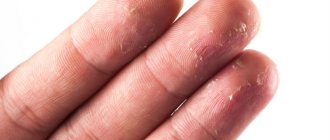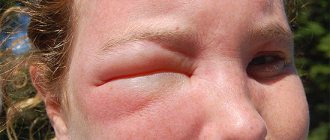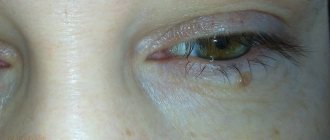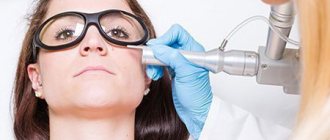Surgitron is a universal radio wave device for eliminating various growths. It is widely used both for cosmetology and medicine. This technique has gained popularity due to its completely painless and bloodless excision process. In addition, the procedure takes little time and allows the patient to go home immediately after the operation. Removing condylomas with Surgitron will allow you to quickly and effectively get rid of annoying formations that not only have an unsightly appearance, but are also dangerous to health.
How safe is the method?
Under the influence of temperature or chemicals, the tissues of the formation are destroyed in a matter of minutes.
Efficiency has been proven by a large number of patients. If you follow all the rules of work, treat the procedure responsibly, and take into account contraindications, then any method can be called harmless.
The success of cauterization largely depends on the extent of the spread of papillomas and their location.
If the growths are large, several visits to the doctor may be required. Hard-to-reach areas require the correct choice of method and the skill of the doctor to prevent damage to healthy areas.
There is blood coming from the wart
Blood is released from the area of the neoplasm only if the blood vessels are damaged. This is usually due to an unintended effect on the wart. Usually, minor bleeding does not pose any particular danger, but there is a risk of introducing an infection into the body through an existing injury.
The location of the wart is also important. If it is located above a large blood vessel or artery, there is a risk of damage to it, which can result in heavy bleeding. However, this is only possible in cases where the formation is large and the damage is significant.
How to stop bleeding
The release of blood from a wart risks spreading the papillomavirus infection to healthy tissue. To avoid this, it is necessary to carefully ensure that the affected hemalymph does not reach other areas of the skin.
You can stop bleeding with the help of some means, for example, a styptic pencil, as well as by using cotton or gauze swabs. They should be pressed as tightly as possible to the wound site, and then fixed until the bleeding stops.
What methods are used for cauterization
The accessible and inexpensive method of cryodestruction is widely used in medical practice. Liquid nitrogen at low temperatures leads to tissue necrosis. Everything happens painlessly and quickly. There is virtually no bleeding.
Drugs that have a chemical effect are used to treat formations on the skin and mucous membranes. Cauterization with solkovagin, condylin or solcoderm is more often used in the presence of small condylomas. Immediately after this, a protective film is formed, which is torn off after a few days.
Laser treatment is performed under local anesthesia. Small scars may form after the procedure.
Electrocoagulation involves the application of high temperature using current. After excision of unpleasant formations with an electric knife, a scab remains in their place. After a few weeks it disappears.
What do you use to solve the problem?
The use of physical and chemical methods is quite effective in the fight against papillomas.
In medical preparations, the active ingredient is acid or extracts obtained from plants. The doctor decides how best to perform cauterization after a thorough examination of the papillomas.
When the choice is between the use of high and low temperatures, an important point is the general condition of the patient, concomitant diseases and characteristics of the body.
To work with laser and current, you need special tools that will help you remove papilloma more professionally than at home.
Feelings during the procedure
Many people are concerned about the question of whether it is painful to get rid of such growths on the skin as condylomas. It depends on the chosen method. Cryodestruction and the chemical method do not require anesthesia. In other cases, ointments with anesthetics are used.
Since each person’s body reacts individually to external irritating factors, the pain sensitivity threshold is different. Therefore, the same procedure for removing papillomas can cause different emotions, but the more negative reviews, the more unbearable cauterization seems.
How does the period pass after removal of the formation?
For small growths, one procedure is sufficient. Depending on the method chosen, recovery can take up to several weeks. Ideally, you do not make any complaints and lead your usual rhythm of life.
Minor bloody discharge from the wound is considered normal. If bleeding occurs, you should immediately contact a specialist. Perhaps the manifestation of an individual reaction of the body in the form of aching pain, tingling, weakness.
All this should go away a week after the removal was carried out, and not a trace of condylomas will remain in the same place.
Why does discharge appear?
There may be bleeding immediately or within a few hours after getting rid of the unpleasant growths.
This happens because tissues are damaged under the influence of high temperatures. Blood clots do not form as quickly.
Minor discharge may last for several days after various types of condylomas are cauterized.
During the healing process, fluid is formed, and most of it consists of lymph. In such cases, there is no need to worry, because this serves as evidence of the correct development of the wound process.
Fluid oozes from the wart
In some cases, lymphatic fluid, colloquially referred to as “ichor,” may be released from the wart. As a rule, its appearance is due to the reaction of the body’s protective barrier to an existing lesion. This kind of liquid consists of a huge number of leukocytes, which prevent pathogens from penetrating into tissues.
The appearance of lymph may indicate the presence of early stages of the inflammatory process in the area of the wart. This lesion is a direct indication to consult a doctor to avoid possible complications.
Personal hygiene during the healing period
Before performing cauterization, the doctor informs patients about proper care in the period after getting rid of papilloma. The protective layer that covers the wound surface must always be clean and dry. To do this, you must follow some rules:
- If such a procedure was carried out, then intimate life must be stopped for a while in order to minimize the re-formation of genital warts on the genitals.
- If the removal was performed on the body, you need to shower regularly, preferably without using a washcloth. Carry out hygiene procedures carefully so as not to damage anything.
- During the first time after treatment, you need to wash yourself as carefully as possible, because the mucous membrane on which condylomas previously lived needs time to recover. Do not use soap or gels. You can use a decoction of medicinal herbs that have antiseptic properties. You need to perform hygiene at least twice a day.
- In some cases, as prescribed by a doctor, it is necessary to use ointments.
For whom the method is contraindicated
There are certain conditions in which the question of how best to remove condyloma and whether it should be cauterized is controversial. In cases of malignant degeneration, the use of chemicals is contraindicated. It should also not be used by pregnant, breastfeeding mothers or children. There is individual intolerance to the components of the drug.
The question of whether cauterization can be done in each individual case is decided only by a doctor who specializes in formations such as papillomas. Cryodestruction can be called a universal method with virtually no contraindications. But the approach should still be individual.
Sometimes it may seem that cauterization is not at all necessary, because papillomas do not always cause concern, but is it worth risking your health? After all, dealing with complications is definitely worse. And no negative aspects that appear after the removal of condyloma can be compared with them.
At the end of the article, there is an interesting video for you in which a dermatologist talks about how papillomas and condylomas on the head of the penis are cauterized:
Author of the article: Anna Derbeneva (dermatologist)
Publication date: 13-02-2015
Good day everyone! On October 30, I had condylomas cauterized inside the vagina (with radio waves). Before this, tests were taken for all infections, everything was ok. The affected area was quite extensive. After this, there was first watery discharge, and then bloody discharge. Three weeks later I had an appointment, the doctor said that everything was healing there, but since the area was large, the process was not so fast. After that, a week later, CDs began, and after that, my husband and I resumed sexual activity with a condom (in total, abstinence was 5 weeks). During the exercise it was painful and there was bleeding. It is now December 10th, i.e. 1.5 months have already passed since the cauterization, and I have copious discharge, sometimes watery yellow, sometimes thick green. I don’t understand how it can take so long to heal there! I don't see the doctor until Saturday, and I'm in complete panic. Please share advice from those who may have encountered this. Thank you
Woman.ru experts
Find out the opinion of an expert on your topic
Anastasia Sergeevna Shikhaleeva
Psychologist. Specialist from the site b17.ru
Uskova Lyudmila Vladimirovna
Psychologist. Specialist from the site b17.ru
Antakova Lyubov Nikolaevna
Psychologist, Consultant. Specialist from the site b17.ru
Svetlana Chernyshova
Psychologist, Consultant. Specialist from the site b17.ru
Shakhova Alisa Anatolyevna
Psychologist. Specialist from the site b17.ru
Spiridonova Nadezhda Viktorovna
Psychologist. Specialist from the site b17.ru
Semikolennykh Nadezhda Vladimirovna
Psychologist. Specialist from the site b17.ru
Victoria Witte
Psychologist, Motivation Harmony Self-development. Specialist from the site b17.ru
Tatiana Bobchenko
Psychologist, Gestalt therapist. Specialist from the site b17.ru
Luiza Mikeeva
Psychologist, System arranger. Specialist from the site b17.ru
I removed it with surgitron 2 years ago. I remember exactly that after some time it really hurt to have sex, then it went away on its own. But! There were no allocations. If only transparent for a couple of days. No more!
It seems that the consequence of the infection, and not its cause, was removed. Condylomas grow only in the case of an advanced process, which were not treated properly or were not properly sanitized.
There should be no colored discharge. The infection was not treated for you, but only the consequences were removed. You need to retake the smears for PCR and culture for microflora.
The fact of the matter is that I have undergone PCR, culture, flora, and blood tests (HIV, hepatitis, syphilis) more than once. everything is perfect. Thanks everyone for the answers.
It’s normal when after removal there is a yellow discharge, lymph comes out, you can imagine the same burn you had there. Not everything is so fast. I was prescribed levomekol ointment into my vagina and squeeze out solcoseryl to prevent bacteria from multiplying.
It’s normal when after removal there is a yellow discharge, lymph comes out, you can imagine the same burn you had there. Not everything is so fast. I was prescribed levomekol ointment into my vagina and squeeze out solcoseryl to prevent bacteria from multiplying.
Complaint
Moderator, please note that the text contains:
The complaint has been sent to the moderator
The page will close automatically after 5 seconds
Forum: health
New for today
Popular today
The user of the Woman.ru website understands and accepts that he is fully responsible for all materials partially or fully published by him using the Woman.ru service. The user of the Woman.ru website guarantees that the placement of materials submitted by him does not violate the rights of third parties (including, but not limited to copyrights), and does not damage their honor and dignity. The user of the Woman.ru site, by sending materials, is thereby interested in their publication on the site and expresses his consent to their further use by the editors of the Woman.ru site.
Reviews
Anna, 35 years old.
I was diagnosed with condylomas on the cervix. When the question of removal arose, the doctor advised Surgitron, because this is the most gentle method today, and in my case this is important. It was scary at first, but the operation went well and there was almost no pain. I didn’t think it would all end so quickly – just 10 minutes. The healing period passed without complications, now everything is fine and condylomas no longer bother me. In general, it’s a good method, and the price isn’t bad.
Valentina, 48 years old.
I had condylomas removed from my anus. When they gave me the painkiller injection, it was quite unpleasant. During the procedure itself I felt almost nothing, only at home I sometimes felt a slight burning sensation, maybe because a lot of condylomas were removed and the case was advanced. After 20 days, during the examination, the doctor said that there were no new condylomas, and the healing went well, I was satisfied with the procedure, especially considering its cost.
Irina, 37 years old, proctologist.
During my medical practice, many patients came to me with complaints of strange formations around the anus and suspicions of hemorrhoids. In most cases these were genital warts that needed to be removed. A few years ago, I recommended a laser for this purpose, but now I recommend only radio wave removal - without blood or infection in the wound. In addition, patients tolerate this procedure much better because it is not as painful and does not damage healthy tissue. And the reviews from my colleagues about this method are also good.
Discharge after removal of condylomas
After removing condylomas (by cauterization, surgical excision, or using other technologies), many women experience brown or yellow discharge, and often even bleed.
Blood may flow several hours after removal of tumors, which is due to tissue damage during the procedure and the further formation of slight swelling.
It is also possible for minor discharge to appear after removal of condylomas, which may occur periodically over several days. This is due to the fact that during the healing process of postoperative wounds, a biological fluid is formed, consisting mainly of lymph. Such processes should not cause any particular concern, because they will indicate proper healing.
Important! If there is discharge and blood for several days or even weeks after removal of condylomas, or itching and burning appear, then you need to consult a doctor who will conduct an examination and send biomaterial for examination, if necessary, to establish the causes of the process.
What to do after removing condylomas using the radio wave method
After removing genital warts using radio wave technology, there is minimal likelihood that any heavy discharge, itching, burning or pain will occur because the procedure is non-invasive and the surrounding tissue is not damaged in any way.
After cauterization of condylomas using radio waves, many experts prescribe the use of a solution of potassium permanganate (ordinary potassium permanganate). You need to wash yourself systematically with this solution (dilute in water and make it quite concentrated) (several times a day). As an alternative, you can use chamomile infusion.
Doctors also prescribe medications that will reduce the likelihood of a relapse. These are pharmaceutical drugs: Panavir, Isoprinosine and other drugs that have antiviral and immunomodulatory effects.
Doctors' opinions on the most effective methods of treating warts and papillomas
The chief physician of Moscow City Hospital No. 62 describes his vision on this matter. Anatoly Nakhimovich Makhson Medical practice: more than 40 years.
“I have been treating people’s papillomas and warts for many years. I’m telling you as a doctor, papillomas along with HPV and warts can really lead to serious consequences if they are not dealt with.
The human papillomavirus is present in everyone on whose body there are papillomas, moles, warts and other pigmented formations. According to rough estimates, 80-85% of the planet's population has it. By themselves they are not dangerous. The problem is that an ordinary papilloma can become melanoma at any time.
These are incurable malignant tumors that kill a person in just a few months and from which there is no salvation.
Prevention measures
As mentioned above, warts cause not only aesthetic discomfort, but can also become the main cause of the development of serious diseases, including cancer. To prevent these complications, tumors should be removed. Typically, this procedure is recommended if there are a large number of warts, or if there are a large number of them.
In accordance with the individual physiological characteristics and type of warts, the doctor will help you choose the optimal method of removal. It is highly not recommended to get rid of the tumor on your own. In this way, it is possible to worsen the condition due to the fact that the virus that provokes the appearance of warts will remain in the deep layers of tissue, which is associated with the appearance of even more pathogenic formations.
We also recommend reading:
- What to do if the wart has grown, hurts, begins to fall off, etc.
- Condylomas, papillomas and warts - is there a difference?
- A wart comes off: what to do?
How to treat after removal of genital warts
After the procedure for removing condylomas, swelling may form on the skin, pain, and discharge from wounds in the form of lymph or ichor may appear.
If severe pain occurs, you can take any suitable painkillers. Ketorol is often used, which not only eliminates pain, but also helps relieve swelling.
Many doctors recommend treating the wound after removal of condylomas with Panavir-gel. The ointment should be applied to the removal site in a thin layer. It is necessary to treat the damaged area several times a day for 1-2 weeks.
Doctors may also prescribe the use of specialized sprays that eliminate the postoperative inflammatory process and also reduce the likelihood of the formation of new warts. One of the most popular drugs is Panavir-intim spray.
If the removal procedure was complicated or had some difficulties, then the specialist may recommend the patient to use Epigen spray, which needs to be used to wash the intimate area. In this case, the duration of the course of using this drug is about 0.5-1 month.
Pus from a wart
If, when a wart is damaged, measures to treat the wound surface are not taken in a timely manner, an infection can penetrate into the affected tissue, which is the main cause of the development of inflammatory processes. At first, these pathogenic processes proceed almost unnoticed. However, over time, a cavity forms in the tissues of the wart, filled with a purulent substance, which is released when the formation is damaged.
As a rule, inflammatory processes in tissues are accompanied by quite severe painful sensations. And given the global nature of the purulent abscess, a significant deterioration in general well-being, expressed in the appearance of weakness and increased body temperature, cannot be ruled out.
Why do condylomas appear again after removal?
There may be several reasons why condylomas began to appear again after their removal:
- Lack of adequate immunomodulatory therapy, ignoring the doctor’s recommendations for taking special immunomodulatory drugs, which must be taken precisely to reduce the risk of relapses.
- Poor removal of condylomas, which led to the spread of infection to nearby tissues. Usually this only happens when skin tumors are removed on their own.
- Serious problems with the functioning of the human immune system, which do not allow the restoration of normal immunity even while taking potent immunomodulatory drugs (this usually occurs if a person is diagnosed with HIV or similar diseases).
Contraindications to the use of radio waves
It is worth noting that there are a number of contraindications to the use of this procedure or to its postponement. For example, radio wave removal of condylomas should not be performed on pregnant and nursing mothers. People with any type of diabetes will also not be able to use this technique, since exposure to radio waves is undesirable for them.
Pulmonary, renal, liver and heart failure, epilepsy and glaucoma of the eye, chronic hepatitis and the presence of an infectious disease of the skin, as well as oncology fall under the list of diseases for which the use of radiosurgery is contraindicated.
More fresh and relevant information about health on our Telegram channel. Subscribe: https://t.me/foodandhealthru
We will be grateful if you use the buttons:
be careful
The presence of papillomas, warts, condylomas, moles and spines on the body is the first sign of malignant melanoma!
We hasten to warn you that most medications “treat” warts, papillomas, moles, etc. - this is a complete deception of marketers who make hundreds of percentage points on drugs whose effectiveness is zero. They do not cure the disease, but only mask the symptoms.
The pharmacy mafia makes huge money by deceiving sick people.
But what to do? How to treat if there is deception everywhere? Doctor of Medical Sciences Anatoly Makhson conducted his own investigation and found a way out of this situation. In this article, the Doctor also told how to 100% protect yourself from melanoma, for only 149 rubles! Read the article in the official source following the link.
Life after genital wart removal
After removal of condylomas, it is necessary not only to take immunomodulatory drugs prescribed by the doctor, but also to observe basic hygiene rules.
After removal of condylomas, damage to the mucous membranes is observed, so free access of all kinds of pathogenic microorganisms automatically opens. If you neglect the banal rules of hygiene of the intimate area, then there is a high probability of suppuration of the postoperative wound, which usually also leads to the development of vaginitis, candidiasis, bartholitis and other similar pathologies.
Is it possible to perform radio wave electrocoagulation on a pregnant woman?
The human papillomavirus is dangerous for the pregnant woman and the fetus, so it is advisable to undergo an examination at the pregnancy planning stage and electrocoagulate papillomatous growths wherever they are located. In pregnant women, immunity decreases, preventing the reaction of rejection of a genetically incompletely related fetus, so an increase in the number of warts is possible. Therefore, already in the first trimester of pregnancy they are coagulated. No complications of manipulation are expected during this sensitive period of a woman’s life. There is no special preparation for the operation; a vaginal smear is examined for the presence of microorganisms.










